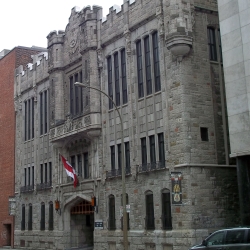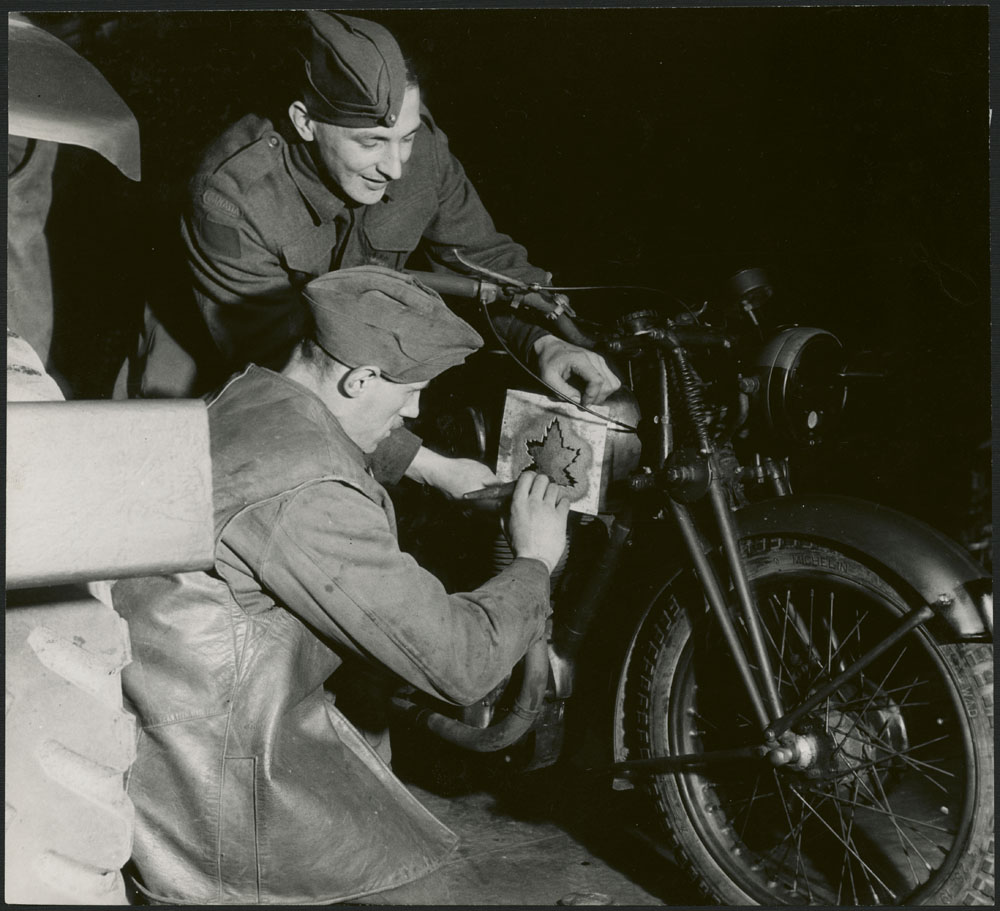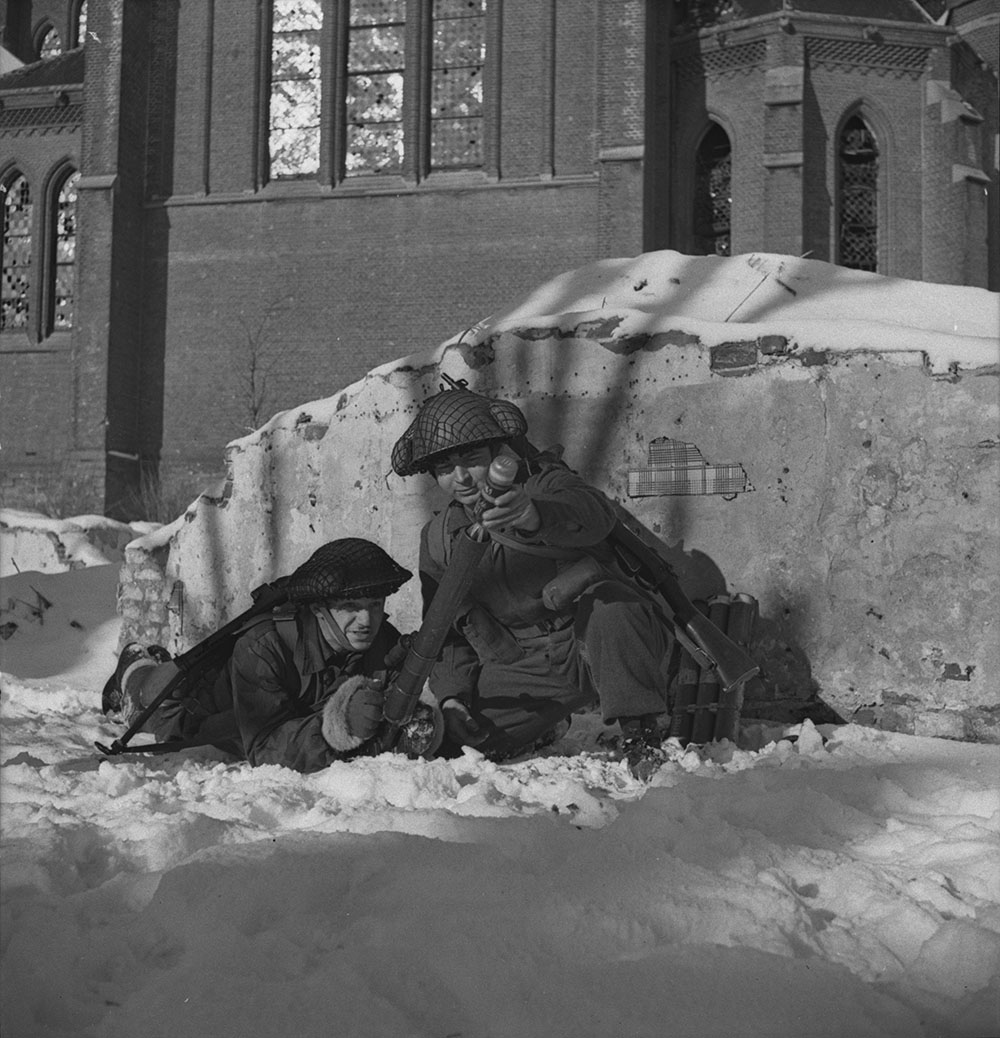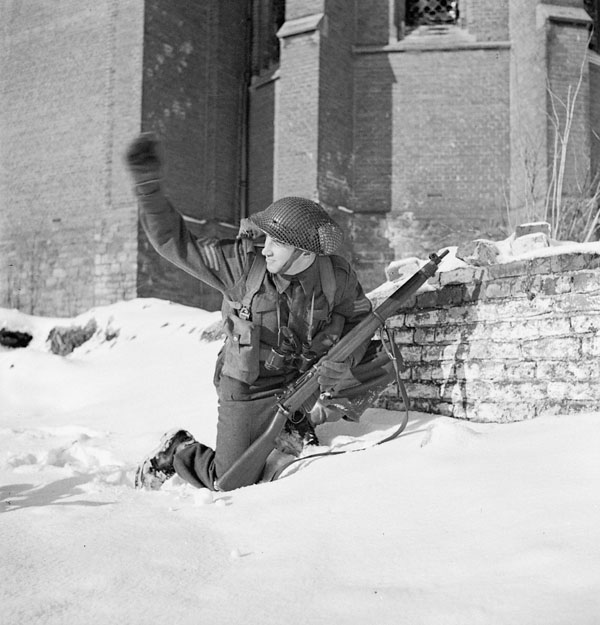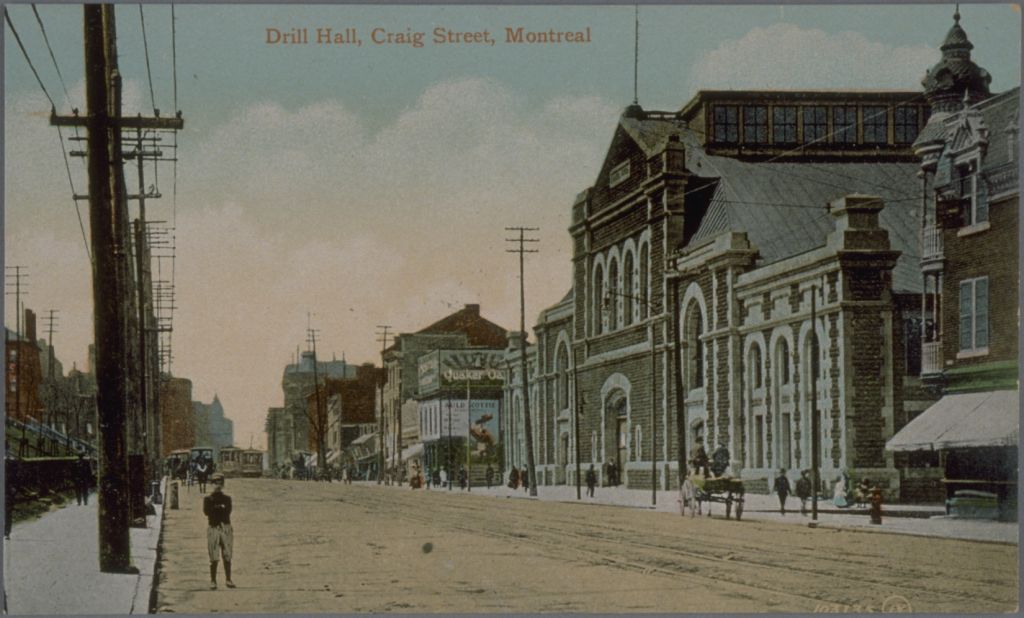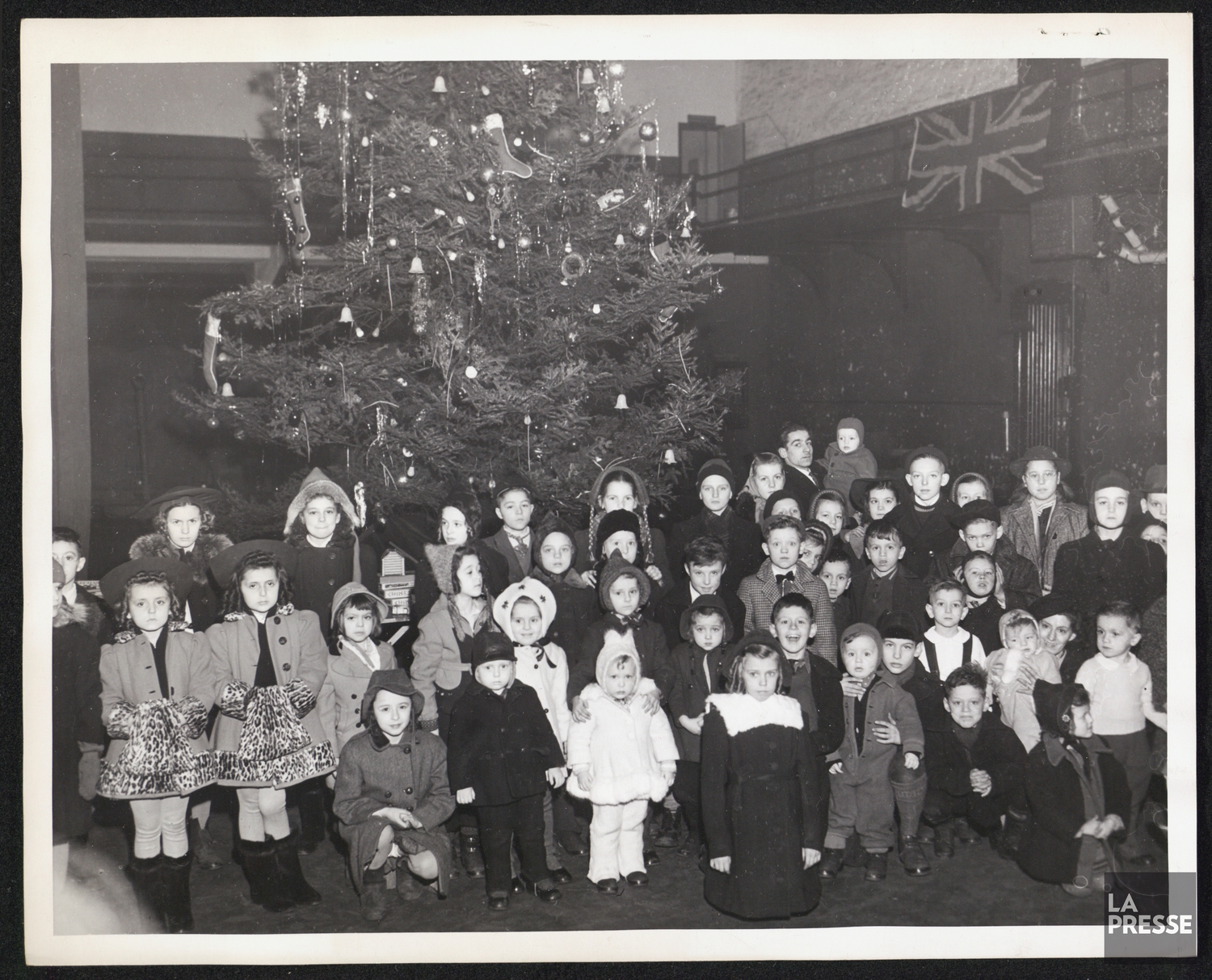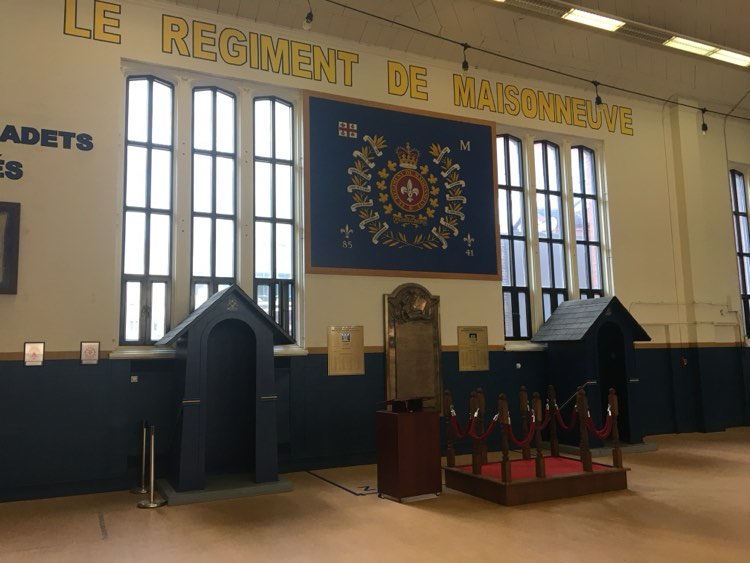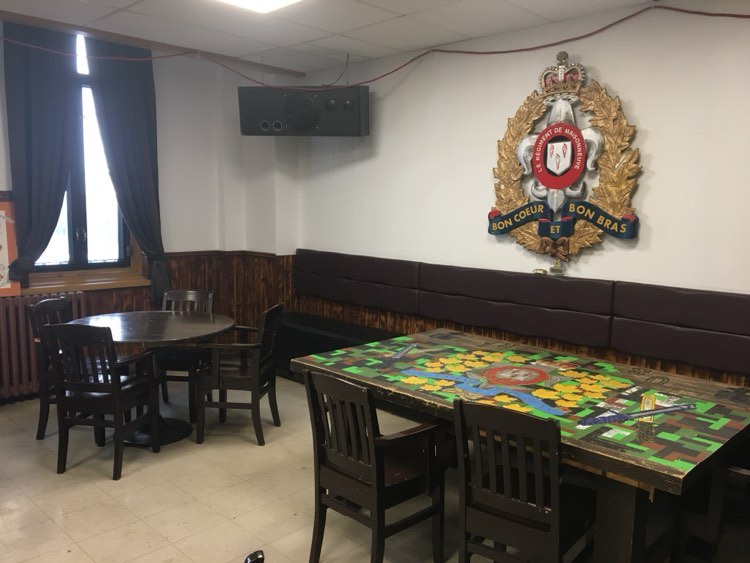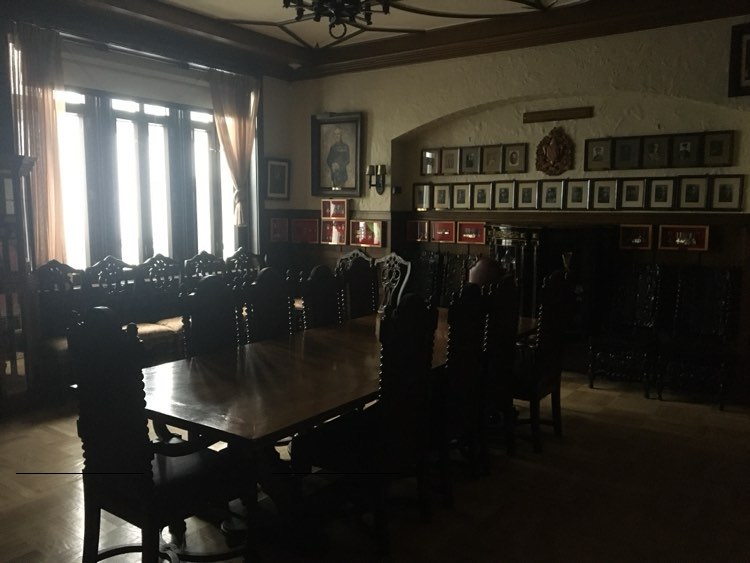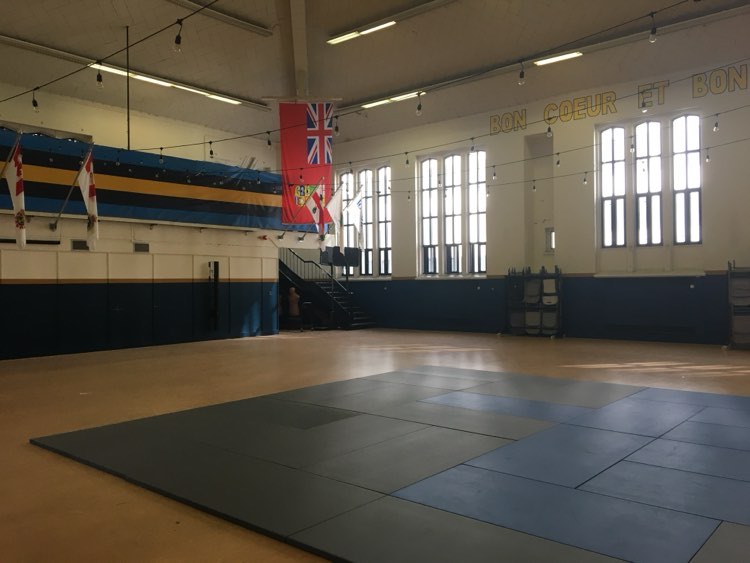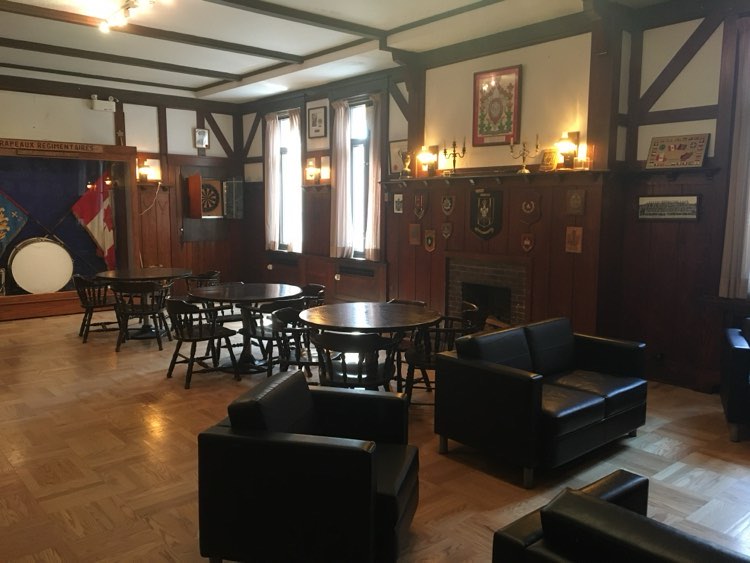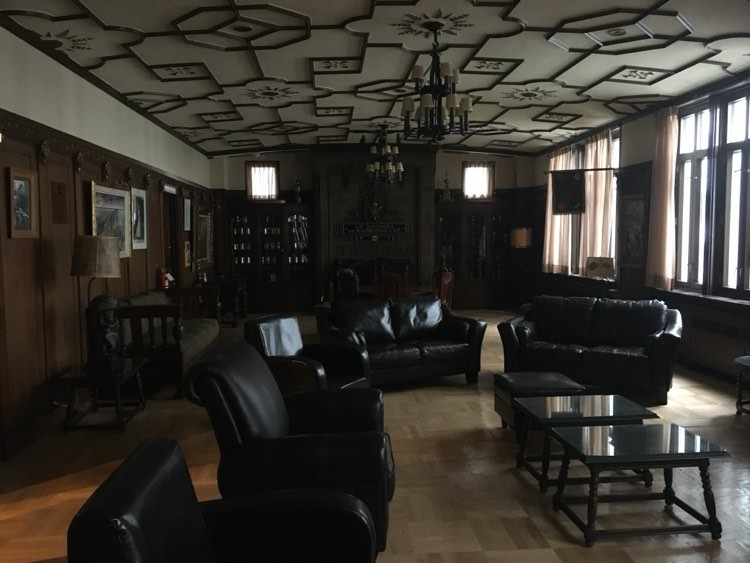At 691 Cathcart Street, in the heart of downtown Montreal, just a few steps from McGill Station, you’ll find the Régiment de Maisonneuve armoury. The regiment takes its name from one of Montreal’s two founders, Paul de Chomedey, Sieur de Maisonneuve. For the regiment, however, Maisonneuve’s legacy goes even further. In the early years of the colony, Maisonneuve was the leader of the small militia, protecting the first Montrealers from potential Haudenosaunee attacks. Over the centuries, European armies came and went, but the presence of the Canadian militia remained. In 1871, the British army left Canada, leaving the young country to form its own army. It was against this backdrop that the 85th Battalion of Infantry was founded on June 4, 1880.
When it was founded, the battalion was a field unit, and mainly carried out military exercises outside of the city. During this period, the 85th’s reservists distinguished themselves among the province’s authorities, winning several awards – which are still on display in their armoury. On the other hand, despite its status as a rural battalion, officer meetings were very often held in Montreal: in city hall offices, in senior officers’ residences, or wherever was convenient! Still, the 85th grew over the years, first achieving regimental status on May 8, 1900, then finally adopting its present name on March 29, 1920.
The regiment through the world wars
The Great War was the regiment’s first test of strength. As a militia regiment, its main task was to stay at home and protect the country in the event of an enemy invasion – an unlikely thing in the circumstances. In fact, the regiment made its mark primarily by sending volunteers to Europe. When war broke out, the 85th’s officers launched a major recruitment campaign. Within days, 250 new soldiers and officers were mobilized and sent to Europe, where they were incorporated into the 22nd Battalion: the future Royal 22nd Regiment. The soldiers of the 85th fought mainly in France, where they suffered many casualties in the trenches. By 1918, the Régiment de Maisonneuve saw 102 deaths and 198 wounded among the 524 soldiers who fought in France throughout the war.

After the war, the 85th saw its activities drastically reduced. Obviously, it was no longer necessary to recruit as many new soldiers for the front, and so the unit’s pre-war activities resumed their regular routine. From 1920, now officially the Régiment de Maisonneuve, militiamen returned to weekly training and summer camps. In March 1926, the regiment also hired a brass band with bugles and trumpets. During the interwar years, the regimental band achieved such a high reputation that in 1939, a parade was planned through the streets of Montreal: a clear sign of the regiment’s popularity within the municipality.
It was during the Second World War that the regiment’s soldiers saw the most action. Unlike during the Great War, the regiment’s volunteers did not have to be transferred among other units in order to be sent to Europe. Indeed, on September 1, 1939, the Régiment de Maisonneuve mobilized its first battalion of volunteers, who arrived in Great Britain the following year. At the same time, it also founded a second battalion, which remained in reserve in Canada. However, at this point in the war, the vast majority of Canadian troops were garrisoned in Great Britain, where they had to carry out various exercises and duties… all the while fighting boredom.
Indirectly, on August 19, 1943, the Régiment de Maisonneuve took part in the now infamous Dieppe Raid. Fortunately for the men mobilized, because they were assigned as reserve troops, they were able to avoid the terrible massacre on the beaches. Certainly, however, they sympathized with their comrades from the other regiments, especially their rival, the Fusiliers Mont-Royal. It was not until two years later that Maisonneuve was mobilized again. On July 6, 1944, the men of Le Maisonneuve landed in Normandy and helped American troops liberate northeastern France, Belgium and the Netherlands until the end of the war – alongside, in particular, the Fusiliers Mont-Royal.
In search of an arsenal
As mentioned above, the regiment originally had no armouries. During its early years, the upper floors of the Marché Bonsecours in Old Montreal served as a warehouse for the regiment’s uniforms, equipment and weapons. In 1888, due to a lack of space, several militia units were invited to use the Armoury Arsenal training room at 175 Craig Street East in Montreal. Over the next few decades, the regiment used the training hall and various other temporary locations for its regional activities.
The question of a permanent location remained, however, a major preoccupation for several officers. At a meeting held on September 21, 1927, the intention was raised to acquire an armoury to center the regiment’s activities. It would seem that having to share the training hall on Craig Street was the subject of many complaints among the members, as Lieutenant-Colonel N.-A. Millette wrote in May 1928: “…we are not yet on an equal footing with the other Montreal units and, naturally, this is a subject of sometimes bitter complaints…”.
Finding a place to house several hundred soldiers, officers and musicians remained a complicated task. In 1929, the city of Outremont offered the regiment a plot of land at the corner of Rockland and North streets, but nothing was built on it due to organizational problems. Five years later, in 1934, plans were made to build an arsenal for the regiment on Chapleau and Rachel streets. However, a citizens’ demonstration organized by the local church put the brakes on the project. The final attempt came in 1937, when the federal government granted a $100,000 budget for the construction of a new armoury, which was to include a drill hall, shooting gallery, classrooms, bowling lanes, swimming pool and separate quarters for officers and non-commissioned officers. This project also failed, however, when the next federal budget eliminated the planned subsidy.
In the meantime, the regiment still shares the Craig Street training hall. The outbreak of war in Europe, in September 1939, at least increased the regiment’s recruitment, which was now at full capacity. Things then accelerated rapidly, and in October 1939, it was decided to move to a warehouse on Ontario Street, owned by the Baillargeon company and previously renovated as an arsenal. From here, the regiment carried out the majority of its activities. Drill Hall, however, remained the regiment’s principal residence until the move to the Cathcart Armoury.
Le Drill Hall
Built at the end of the 19th century, at the same time as several military units were being established in Montreal, the Drill Hall was a large building designed for troop training. In 1938, the building’s façade was renovated. The hall housed the Régiment de Maisonneuve until their move to the Cathcart Armoury in 1965. Subsequently, the armoury became a detention center, before being demolished in 1969 for the construction of the Waterloo prison.
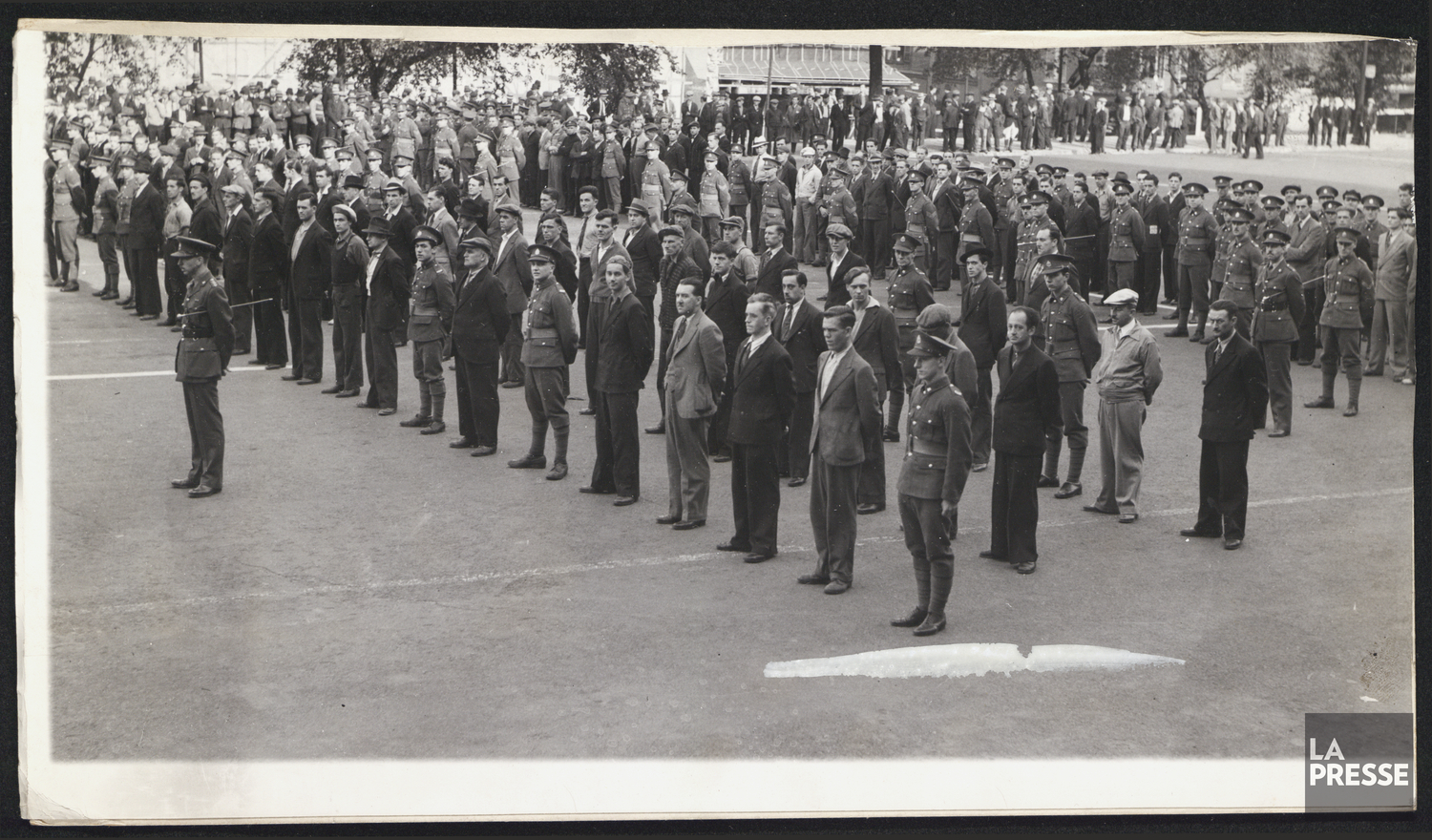
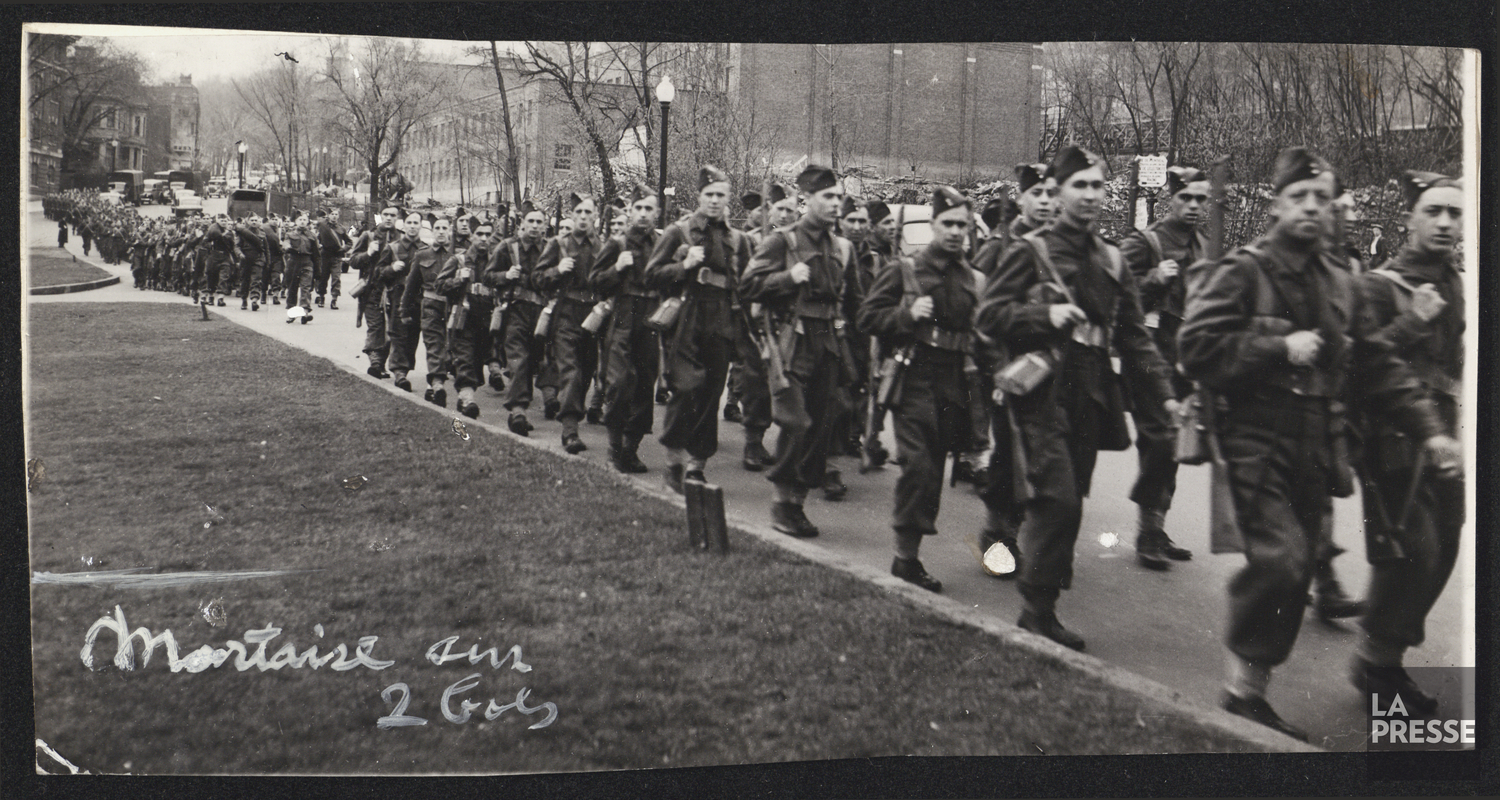
The Cathcart Armoury
In parallel with the Régiment de Maisonneuve’s search for a new armoury, the Victoria Rifles (founded in 1862) finally succeeded in building their own armouries, between 1933 and 1934. Designed by Montreal architect David Jerome Spencer, the armoury’s exterior façade was built in a Tudor style consciously reminiscent of a medieval castle. Completely at odds with the surrounding buildings, the armoury features three turrets, a balcony and a portcullis door.
Unlike many other armouries on the island of Montreal, Cathcart’s armoury was built high up to fit in with the urban layout of the downtown area. The building’s first floor contains offices for employees and a rest room for soldiers, while the second floor is mainly reserved for officers’ messes and reception rooms. Finally, on the upper floor we find the main training hall, where regimental members practice team sports or take part in amateur wrestling competitions.
The Victoria Rifles occupied the arena until their disbandment in 1965. At that time, the Canadian Army was reorganizing its regiments, and it was decided to disband them in favor of the Régiment de Maisonneuve. The Régiment de Maisonneuve finally won an armoury, but only on condition that the Victoria Rifles line continue for the next years to come.
Left: A few photos from our visit to the Régiment de Maisonneuve armoury, showing in turn the gymnasium, the soldiers’ hall and the various officers’ messes.
The regiment today
The regiment is a unit very proud of its history, and its members today still retain the same spirit as their colleagues of the last century. To this end, the regiment continues to organize various activities and training for its recruits, as well as maintaining many social activities for those around them. Since the Second World War, many of the regiment’s members have been engaged in other operations, such as in Afghanistan and elsewhere in the province. The Maisonneuve remains active, and its tradition is maintained.
Naturally, the armoury is also still active, and regularly hosts regimental activities. Visitors will, however, be impressed by the quantity of objects of all kinds that decorate every metre of the building. The regiment’s long history rubs shoulders with the officers, soldiers and recruits who still work in the offices every day. At present, those in charge of the armoury are busily inventorying and documenting the objects they hold, as well as adding new acquisitions to their collection. For those in charge, reserving a few pieces for a regimental museum is not in the plans. “The museum is all around us,” said Jacques Coiteux, the man in charge of the Regimental Museum, when describing the armoury during our visit. To this end, the Regiment is faced with a titanic task in documenting their imposing collection, but the results are there, with a magnificent building rich in history.
Article written by Julien Lehoux for Je Me Souviens.
Sources :
- “Le Régiment de Maisonneuve“, Gouvernement du Canada/Government of Canada.
- “Le Régiment de Maissonneuve : Histoire“, Le Régiment de Maisonneuve (in french).
- “Cathcart Armoury“, Parcs Canada/Parks Canada.
- “The Undead“, World War Graphic History.
For more content:
- A collection of almost 100 photos showing the activities of the Régiment de Maisonneuve in Montreal during the Second World War is available on the BAnQ website here.
- Finally, we recommend Bon Cœur et Bon Bras: Histoire du Régiment de Maisonneuve, 1880-1980 (in french) for a complete history of the regiment.
